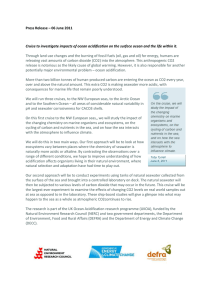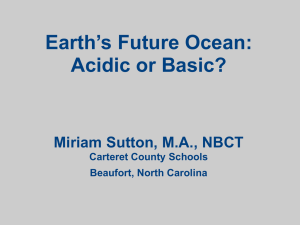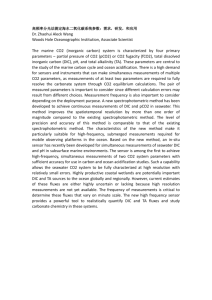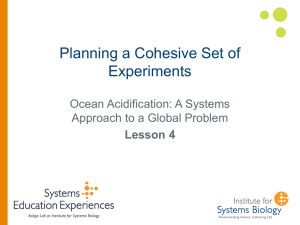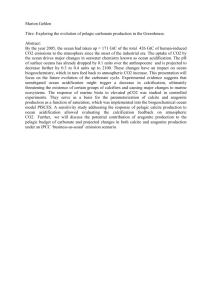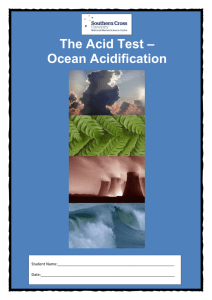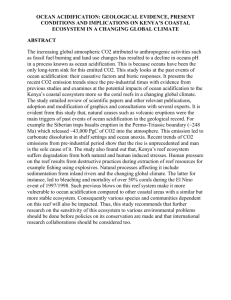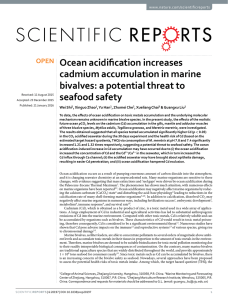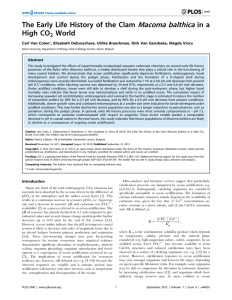C U LARK
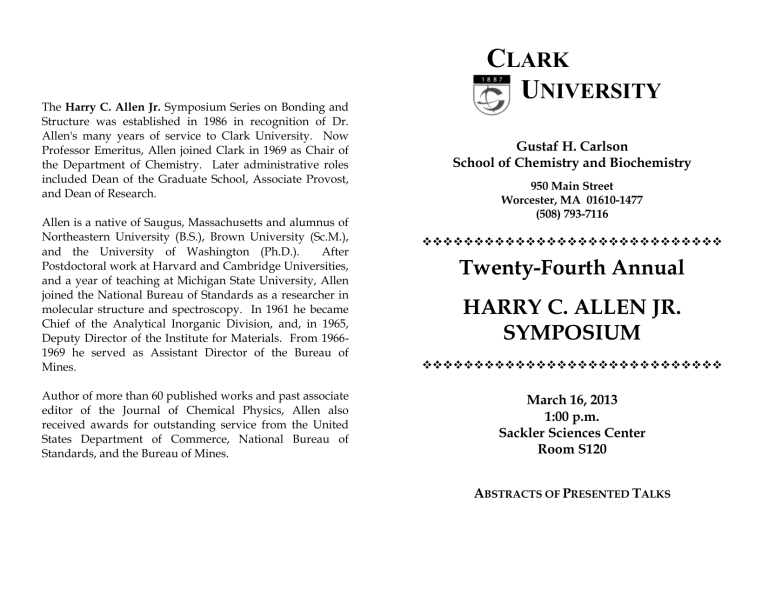
The Harry C. Allen Jr.
Symposium Series on Bonding and
Structure was established in 1986 in recognition of Dr.
Allen's many years of service to Clark University. Now
Professor Emeritus, Allen joined Clark in 1969 as Chair of the Department of Chemistry. Later administrative roles included Dean of the Graduate School, Associate Provost, and Dean of Research.
Allen is a native of Saugus, Massachusetts and alumnus of
Northeastern University (B.S.), Brown University (Sc.M.), and the University of Washington (Ph.D.). After
Postdoctoral work at Harvard and Cambridge Universities, and a year of teaching at Michigan State University, Allen joined the National Bureau of Standards as a researcher in molecular structure and spectroscopy. In 1961 he became
Chief of the Analytical Inorganic Division, and, in 1965,
Deputy Director of the Institute for Materials. From 1966-
1969 he served as Assistant Director of the Bureau of
Mines.
Author of more than 60 published works and past associate editor of the Journal of Chemical Physics, Allen also received awards for outstanding service from the United
States Department of Commerce, National Bureau of
Standards, and the Bureau of Mines.
C
LARK
U
NIVERSITY
Gustaf H. Carlson
School of Chemistry and Biochemistry
950 Main Street
Worcester, MA 01610-1477
(508) 793-7116
Twenty-Fourth Annual
HARRY C. ALLEN JR.
SYMPOSIUM
March 16, 2013
1:00 p.m.
Sackler Sciences Center
Room S120
A
BSTRACTS OF
P
RESENTED
T
ALKS
Andrew Dickson
Scripps Institute of Oceanology
University of California, San Diego
Measuring pH in Seawater: Prejudice, Practice, and Pitfalls
The growing recognition of the potential importance of pH changes in the ocean that result from the dissolution of fossil-fuel derived CO
2
into seawater (ocean acidification) has led to an increasing emphasis on seawater pH measurements.
Unfortunately, the field of pH scales and the study of acid-base reactions in seawater has become one of the more confused areas of marine chemistry with multiple different (and sometimes conflicting) approaches to measurement and interpretation of pH co-existing in the literature of the last 25 years. Nevertheless, it is essential to enable world-wide uniformity and long-term comparability of pH measurements, enabling effective research into the oceanic CO
2
system on climatological time scales and global space scales.
In this presentation, I shall review the current status of pH measurements in seawater. I shall assess why the current recommended approach is to infer hydrogen ion concentration from a spectro- photometric measurement of an acidbase indicator (with known optical and thermodynamic properties) that has been added to a sea water sample, rather than to measure the pH (hydrogen ion activity?) using a hydrogen ion sensitive electrode cell and standard buffers traceable to NIST pH Standard Reference Materials: the approach used in almost all other areas of study.
I shall discuss the various uncertainty components that contribute to the overall uncertainty of seawater pH measurements. These involve both uncertainties in the definition of pH in seawater; measurement uncertainties involved in calibrating an indicator dye to measure pH in seawater; and measurement uncertainties involved in using that indicator dye to determine the pH of a particular seawater sample. (Note: recently there has been a move to using ISFETbased sensors for monitoring seawater pH; I shall briefly indicate how they too can be calibrated, and the implications for the uncertainty budget for pH measurements using such devices.)
Finally, I shall outline the calibration hierarchy needed to ensure that measurements of seawater pH achieve metrological traceability to SI, indicating those aspects that are still areas of active study.
Ocean Acidification
Causes, Consequences, and Detection
1:00 pm .......................................................................... Anne Todgham
2:00 pm .............................................................................. Sarah Cooley
3:00 pm ............................................... Coffee Break/Poster Session
4:00 pm ....................................................................... Andrew Dickson
5:00 pm ........................................................................... Poster Awards
Anne Todgham
Biology Department
San Francisco State University
Costs and Consequences of Life in a High CO
2
Ocean
Ocean acidification (OA), the reduction in ocean pH via the absorption of anthropogenic atmospheric CO
2
, is predicted to have large impacts on marine ecosystems ranging from polar seas to tropical reefs. These impacts are not well understood at the community and ecosystem level, although they are likely to be substantial, resulting in range shifts and population declines. Currently we lack a comprehensive understanding of the resilience of marine organisms to conditions of CO
2
-acidified seawater and research is needed that investigates the effects of elevated CO
2
on a variety of physiological processes, in addition to calcification. The research community is taking a number of approaches to understanding the physiological “weak links” underlying thresholds in CO
2
tolerance in both adult and juvenile life stages and asking whether animals have the potential to “flex” their physiology to compensate for the impacts of CO
2
driven acidification. While it is becoming clear that responses to elevated
CO
2
will vary amongst organisms, changes in metabolism and growth is a common thread in much of the research to date, suggesting that there are changes in energy budget associated with an animal’s response to OA conditions. As animals change their allocation of resources towards one biological process, such as calcification, we are beginning to see the costs associated with these adjustments in other biological processes, such as decreases in stress tolerance. Furthermore, it is becoming increasingly clear that research efforts should consider the multiple stressors that are projected to change concomitantly in global climate change scenarios to make accurate predictions of organismal resilience. The ability and manner in which an organism responds to increased CO
2
levels is influenced by its exposure to other changes in environmental conditions such as increased temperature. Recent studies have also provided evidence that sufficient genetic variation exists within populations of species, in terms of sensitivity to elevated CO
2
, that adaptation is also an important consideration. Data from studies on marine invertebrates and vertebrates will be used to highlight some of the important physiological costs and consequences of living in a high CO
2
ocean.
Sarah Cooley
Woods Hole Oceanographic Institution
Woods Hole
Socioeconomic Consequences of Ocean Acidification
Ocean acidification is projected to change marine ecosystems profoundly by increasing dissolved CO
2
and decreasing ocean pH, carbonate ion concentration, and calcium carbonate mineral saturation state worldwide.
Because these changing chemical conditions alter physiological processes of many marine plants and animals, marine populations and ecosystems could experience broad effects due to ocean acidification. As a result, human communities may experience changes in the benefits they receive from those affected ecosystems. For example, mollusks and corals could be hard hit by ocean acidification, yet they provide billions of dollars of revenue each year to human communities from fishery revenue and coastal protection. In addition, marine species that could be affected by ocean acidification also provide non-economic benefits, like maintenance of biodiversity and cultural traditions, that support human communities both directly and indirectly. Current studies are examining how ecosystem services could be affected by ocean acidification as well as how policies could be implemented to address some of these changes.
